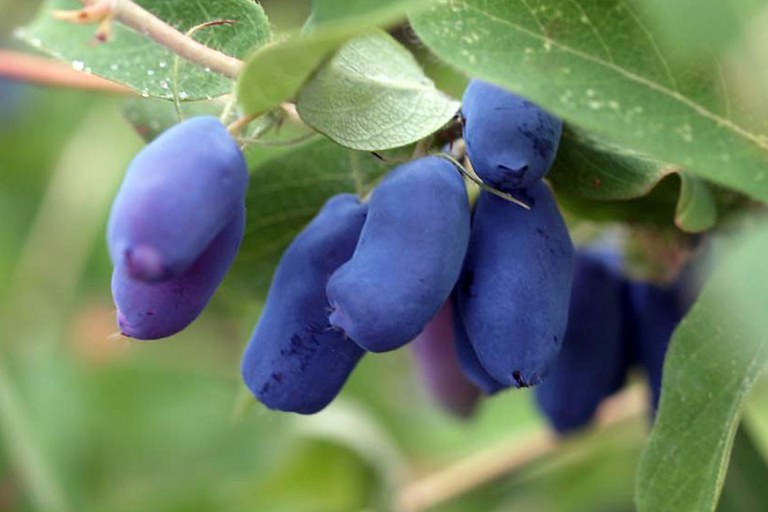The facility has 54 Haskap plants of the Tundra, Indigo Gem, Berry Blue, Indigo Treat and Borealis varieties.
Background Information
Haskaps hail originally from Japan and Russia. They are especially popular in Japan, used in items such as soft candies and juices. The Haskap has been referred to as "the elixir of life" in Japan. They can withstand temperatures as low as -25 degrees Celsius, and flowers at full bloom have survived temperatures as low as -10 degrees Celsius. Haskap Bushes can tolerate soil with a wide range of pH (5-8).
Haskaps have much higher ascorbic, phenolic, anthocyanin, and antioxidant levels than many other fruits, including blue berries, strawberries, and raspberries (Celli, Ghnem, & Brooks 2014). These berries have relative to superior antioxidant levels to similar fruits commonly referred to as superfruits.
General Information
- Haskaps are on of the first crops of the season to flower and produce fruit (early May flowers)
- The berries become fully ripened from mid-June to early July
- There are a number of different varieties of Haskaps available on the market, with 2 varieties (which bloom concurrently) needed for cross-pollination between the plants.
- Most harvesting is done by hand, but varieties are becoming available which can be mechanically harvested
- The Haskap berry's flavor is sweet and slightly tangy, resembling the flavor of blueberries, cranberries and raspberries.
- The berries can be eaten fresh or frozen. They can also be made into jams, juice, wine and infused into many products including skin creams.
- Haskaps have extremely high antioxidant levels when compared to other similar fruits
Haskaps at LERGREC
Here at the center, we have 54 Haskap plants with 5 varieties. The varieties are Tundra, Indigo Gem, Berry Blue, Indigo Treat and Borealis. The bushes were planted in 2014, while the Borealis variety was planted in fall of 2017. The average weight for the berries is 0.67g-1.0g, and the average Brix value is 11.0-14.0. Indigo Gem and Indigo Treat have the highest Brix values of approximately 13-18. Berries were present on all varieties at about mid-May, and became fully ripe in early to mid-June. In 2018, the berries were harvested from June 22nd to June 25th. Our Haskaps are grown in two rows with alternating varieties within the rows. Haskaps should be planted with a pollinator or concurrent blooming species every 4 plants. They are naturally disease resistant but can get sunburnt. Birds love them and they require netting when the berries begin to change color.


